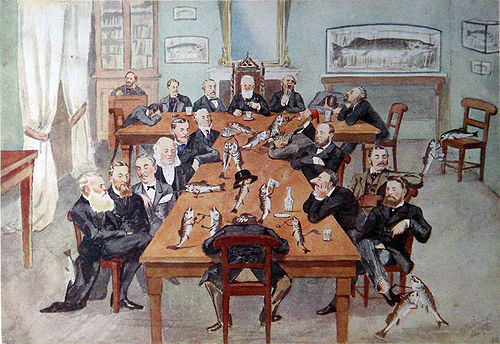
The Piscatorial Society is one of the oldest angling societies in England, if not the world. It was founded in 1836 and still flourishes today. It leases fly fishing water on a number of chalk streams in Hampshire and Wiltshire, including the Wylye, the Test, the Itchen and the Hampshire Avon. It no longer has a base in London, but maintains a Rod Room on one of its Wiltshire rivers. Although members originally fished for all sorts of fish (the society's crest still represents the head of a pike), the society now concentrates on fishing for brown trout and grayling with upstream dry fly or unweighted nymph imitations dressed lightly in the style of G. E. M. Skues.[ citation needed ]
The Society has, at its core, three key objectives. First, to maintain a fellowship of fly fishers and the tradition of fly fishing, where possible, for wild or naturalised brown trout and grayling. Secondly, to preserve what remains of the chalk stream environment; unpolluted water, healthy and appropriate weed growth and good fly hatches. Thirdly, to enhance the Society's libraries and archives.[ citation needed ]


